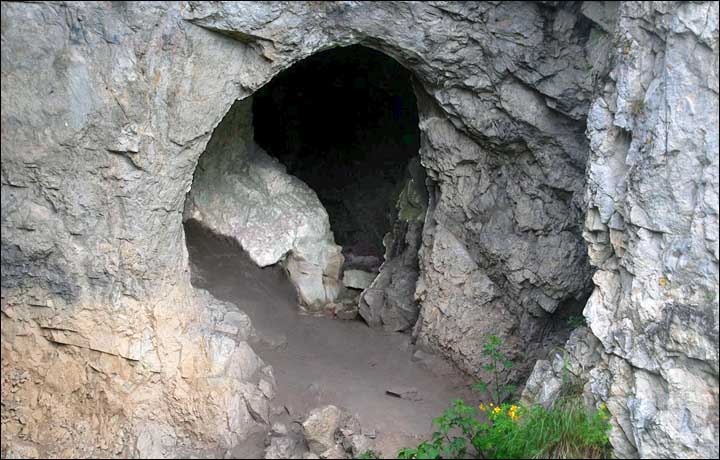|
The Artifact Evidence OOPARTS |
Green Stone bracelet is oldest ever found in the world 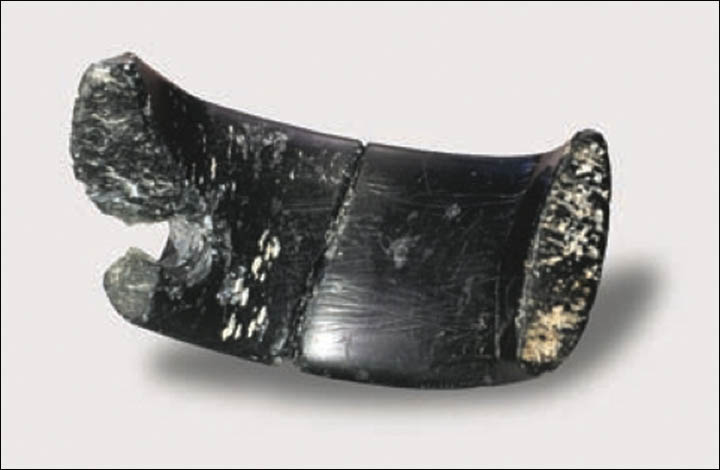 Made of chlorite, the bracelet was found in the same layer as the remains of some of the prehistoric people and is thought to belong to them. Pictures: Anatoly Derevyanko and Mikhail Shunkov By Anna Liesowska07 May 2015
Dating back 40,000 years to the Denisovan species of early humans, new pictures show beauty and craftsmanship of prehistoric jewellery. It is intricately made with polished green stone and is thought to have adorned a very important woman or child on only special occasions. Yet this is no modern-day fashion accessory and is instead believed to be the oldest stone bracelet in the world, dating to as long ago as 40,000 years. Unearthed in the Altai region of Siberia in 2008, after detailed analysis Russian experts now accept its remarkable age as correct. New pictures show this ancient piece of jewellery in its full glory with scientists concluding it was made by our prehistoric human ancestors, the Denisovans, and shows them to have been far more advanced than ever realized. 'The bracelet is stunning - in bright sunlight it reflects the sun rays, at night by the fire it casts a deep shade of green,' said Anatoly Derevyanko, Director of the Institute of Archaeology and Ethnography in Novosibirsk, part of the Siberian Branch of the Russian Academy of Sciences. 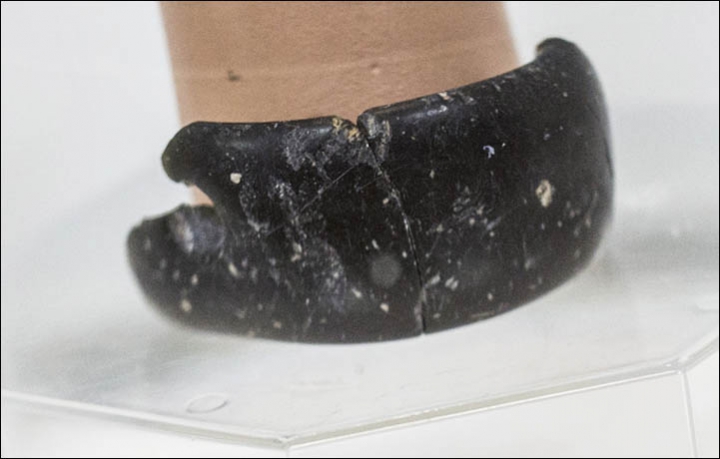 While bracelets have been found pre-dating this discovery, Russian experts say this is the oldest known jewellery of its kind made of stone. Picture: Vera Salnitskaya 'It is unlikely it was used as an
everyday jewellery piece. I believe this beautiful and very fragile
bracelet was worn only for some exceptional moments.'
The bracelet was found inside the famous Denisova Cave, in the Altai Mountains, which is renowned for its palaeontological finds dating back to the Denisovans, who were known as homo altaiensis, an extinct species of humans genetically distinct from Neanderthals and modern humans. Made of chlorite, the bracelet was found in the same layer as the remains of some of the prehistoric people and is thought to belong to them. What made the discovery especially striking was that the manufacturing technology is more common to a much later period, such as the Neolithic era. Indeed, it is not clear yet how the Denisovans could have made the bracelet with such skill. 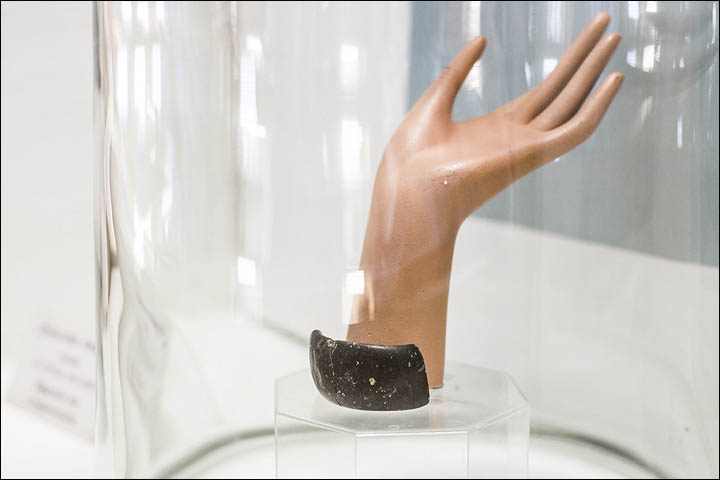 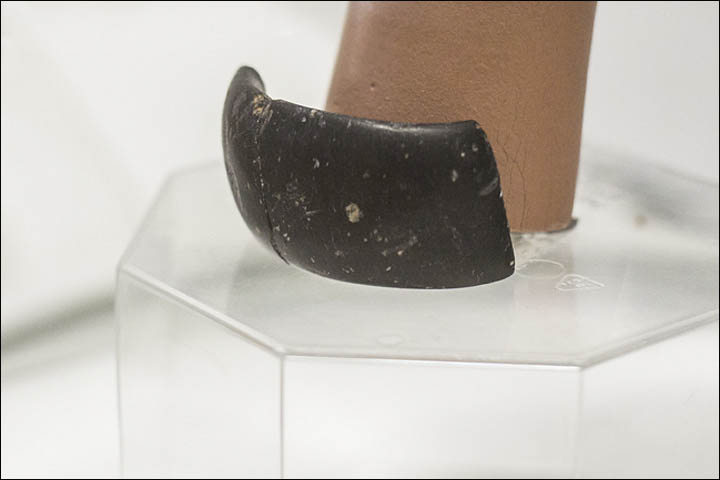 New pictures show this ancient piece of jewellery in its full glory with scientists concluding it was made by our prehistoric human ancestors. Pictures: Vera Salnitskaya Writing in the Novosibirsk
magazine, Science First Hand, Dr Derevyanko said: 'There were found two
fragments of the bracelet of a width of 2.7cm and a thickness of 0.9 cm.
The estimated diameter of the find was 7cm. Near one of the cracks was a
drilled hole with a diameter of about 0.8 cm. Studying them, scientists
found out that the speed of rotation of the drill was rather high,
fluctuations minimal, and that was there was applied drilling with an
implement - technology that is common for more recent times.
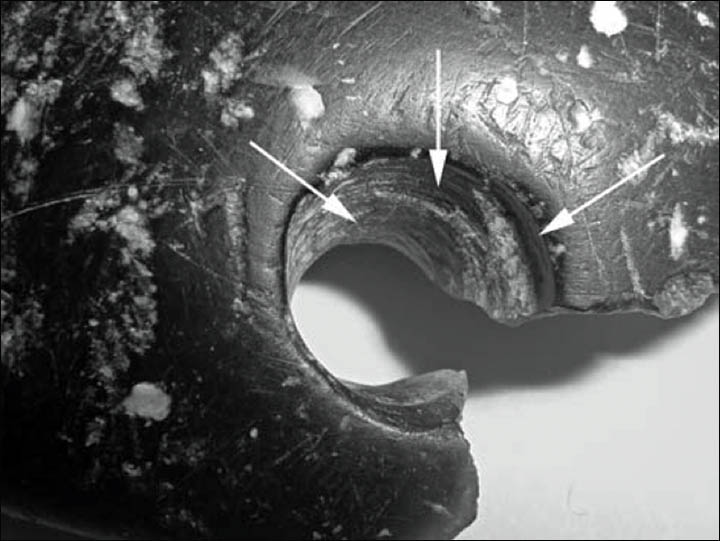 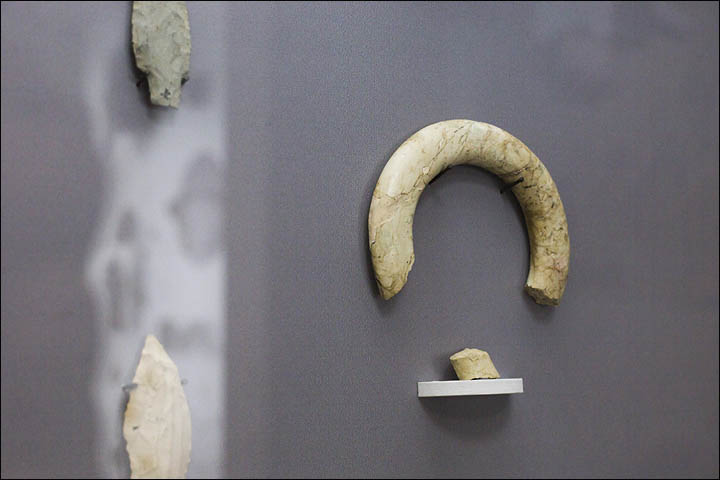 Traces of the use of drilling with an implement on the bracelet from Denisova Cave. Polished stone bracelet of Neolithic era. Pictures: Anatoly Derevyanko and Mikhail Shunkov, Vera Salnitskaya 'The ancient master was skilled in techniques previously considered not characteristic for the Palaeolithic era, such as drilling with an implement, boring tool type rasp, grinding and polishing with a leather and skins of varying degrees of tanning.' Chlorite was not found in the vicinity of the cave and is thought to have come from a distance of at least 200km, showing how valued the material was at the time. Dr Derevyanko said the bracelet had suffered damage, including visible scratches and bumps although it looked as if some of the scratches had been sanded down. Experts also believe that the piece of jewellery had other adornments to make it more beautiful. 'Next to the hole on the outer surface of the bracelet can be seen clearly a limited polished zone of intensive contact with some soft organic material,' said Dr Derevyanko. 'Scientists have suggested that it was a leather strap with some charm, and this charm was rather heavy. The location of the polished section made it possible to identify the 'top' and 'bottom' of the bracelet and to establish that it was worn on the right hand.' 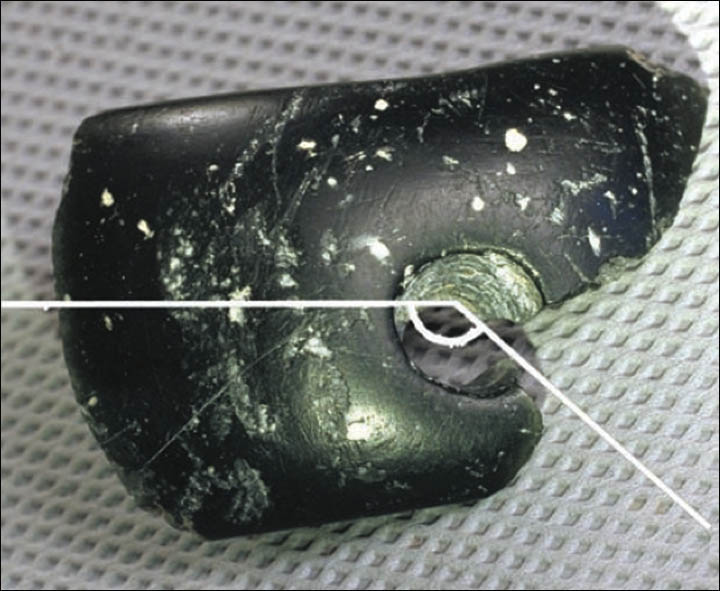  Polished
zone of intensive contact with some soft organic material. General
reconstruction of the view of the bracelet and comparison with the
modern bracelet. Pictures: Anatoly Derevyanko and Mikhail Shunkov,
Anastasia Abdulmanova
Located next to the Anuy River, about 150 km south of
Barnaul, the Denisova Cave is a popular tourist attraction, such is its
paleontological importance. Over the years a number of remains have been
found there, including some of extinct animals such as the woolly
mammoth. In total evidence of 66 different types of mammals have been
discovered inside, and 50 bird species.The most exciting discovery was the remains of the Denisovans, a species of early humans that dated back as early as 600,000 years ago and were different to both Neanderthals and modern man. In 2000 a tooth from a young adult was found in the cave and in 2008, when the bracelet was found, archaeologists discovered the finger bone of a juvenile Denisovan hominin, whom they dubbed the 'X woman'. Further examination of the site found other artifacts dating as far back as 125,000 years. The institute's deputy director Mikhail Shunkov suggested that the find indicates the Denisovans - though now extinct - were more advanced than Homo sapiens and Neanderthals. 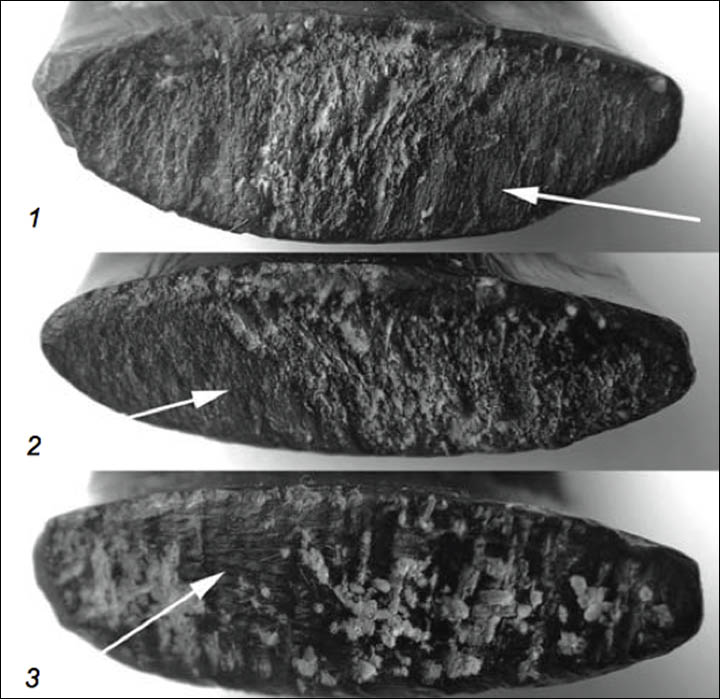 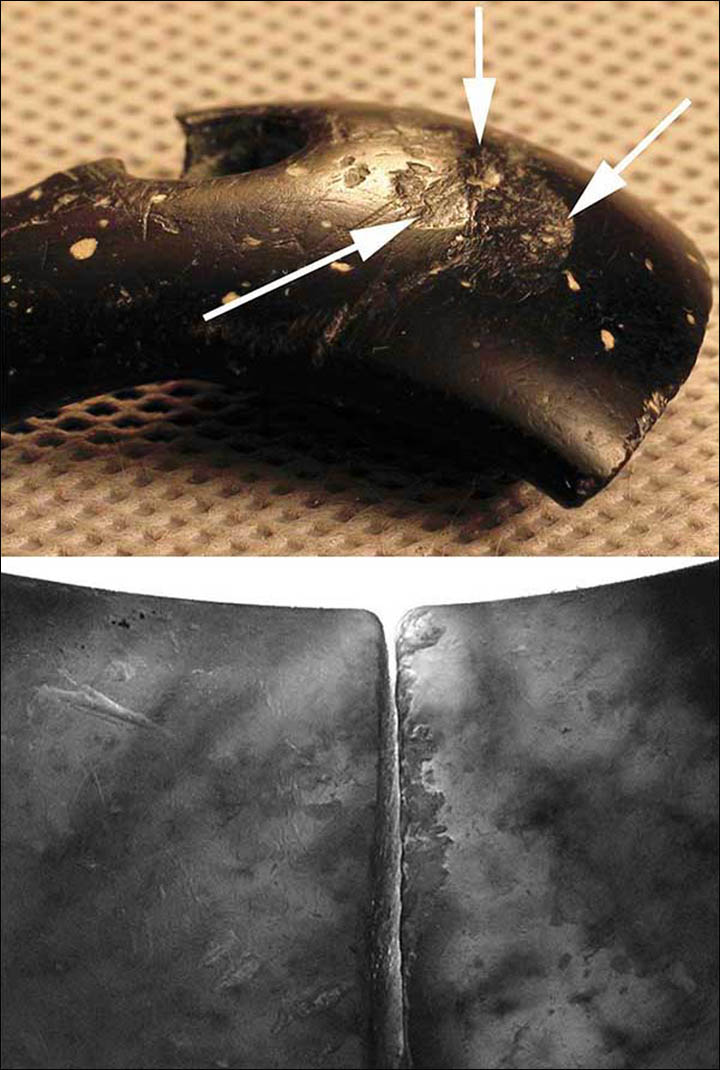 The traces of reparation on the cracks. Bracelet had suffered damage, including visible scratches and bumps. Pictures: Anatoly Derevyanko and Mikhail Shunkov 'In the same layer, where we found a Denisovan bone, were found interesting things; until then it was believed these the hallmark of the emergence of Homo sapiens,' he said. 'First of all, there were symbolic items, such as jewellery - including the stone bracelet as well as a ring, carved out of marble.' The full details of the ring are yet to be revealed. 'These finds were made using technological methods - boring stone, drilling with an implement, grinding - that are traditionally considered typical for a later time, and nowhere in the world they were used so early, in the Paleolithic era. At first, we connected the finds with a progressive form of modern human, and now it turned out that this was fundamentally wrong. Obviously it was Denisovans, who left these things.' This indicated that 'the most progressive of the triad' (Homo sapiens, Homo Neanderthals and Denisovans) were Denisovans, who according to their genetic and morphological characters were much more archaic than Neanderthals and modern human.' 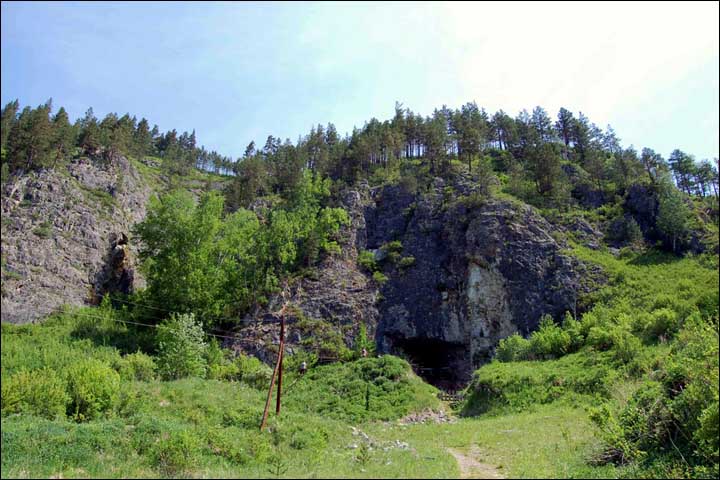 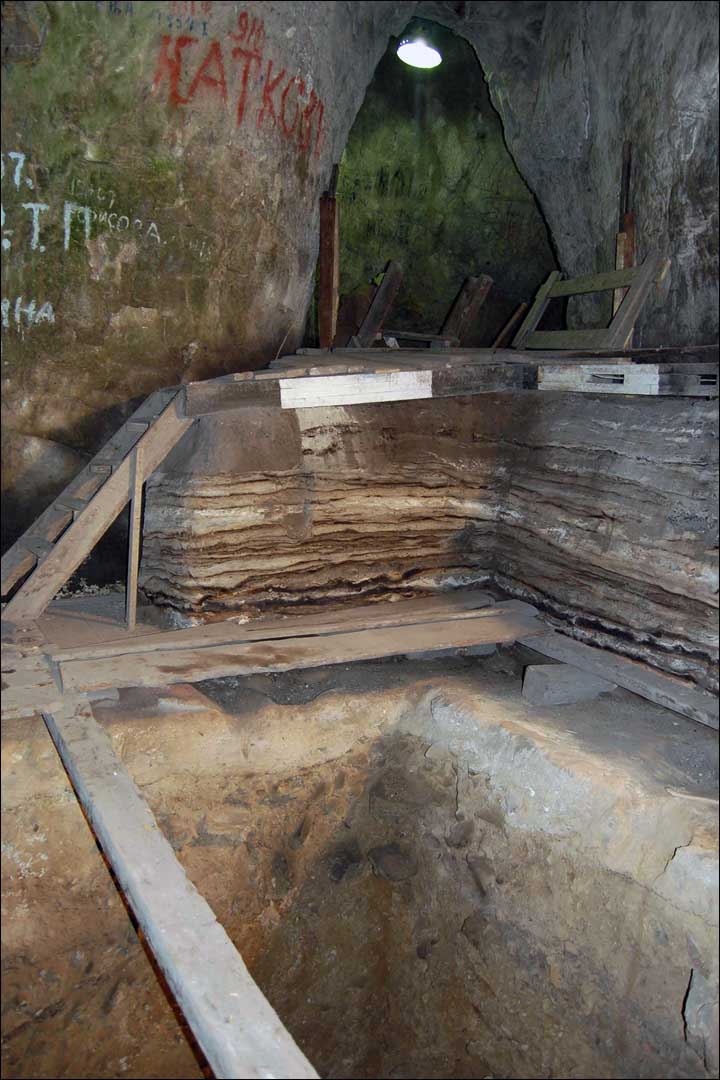 The entrance to the Denisova cave and the archaeological excavations inside. Pictures: The Siberian Times But could this modern-looking bracelet have been buried with older remains? The experts considered this possibility but rejected it, saying they believe the layers were uncontaminated by human interference from a later period. The soil around the bracelet was also dated using oxygen isotopic analysis. The unique bracelet is now held in the Museum of History and Culture of the Peoples of Siberia and the Far East in Novosibirsk. Irina Salnikova, head the museum, said of the bracelet: 'I love this find. The skills of its creator were perfect. Initially we thought that it was made by Neanderthals or modern humans, but it turned out that the master was Denisovan, at least in our opinion. 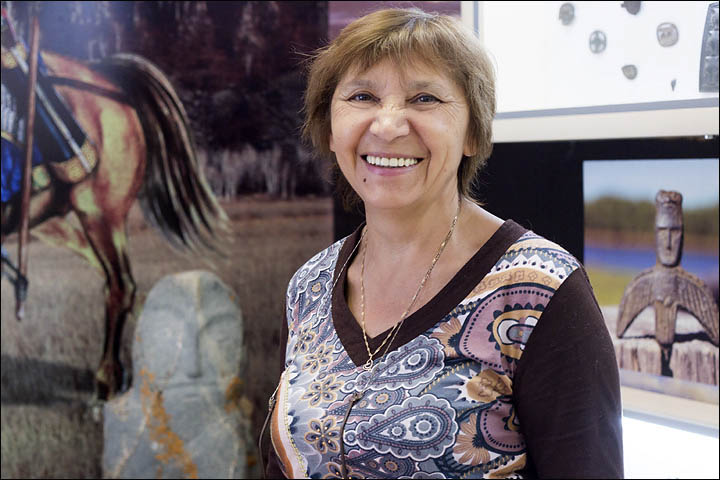 Irina Salnikova, head the Museum of History and Culture of the Peoples of Siberia and the Far East in Novosibirsk. Picture: Vera Salnitskaya 'All jewellery had a magical meaning for ancient people and even for us, though we do not always notice this. Bracelets and neck adornments were to protect people from evil spirits, for instance. This item, given the complicated technology and 'imported' material, obviously belonged to some high ranked person of that society.' While bracelets have been found pre-dating this discovery, Russian experts say this is the oldest known jewellery of its kind made of stone. SOURCE: Siberian Times |
|
Green Stone Bracelet May Have Been Made by Denisovans
 Anatoly Derevyanko and Mikhail Shunkov, Anastasia Abdulmanova NOVOSIBIRSK, SIBERIA
Thursday, May 07, 2015 A stone bracelet unearthed in Denisova Cave in the Altai Mountains of Siberia in 2008 is being called the oldest-known jewelry of its kind. Anatoly Derevyanko, director of the Russian Academy of Sciences’ Institute of Archaeology and Ethnography, and the research team believe that the cave’s Denisovan layers were uncontaminated by human activity from a later period. The soil around the two fragments of the jewelry piece was dated with oxygen isotopic analysis to 40,000 years ago. “In the same layer, where we found a Denisovan bone, were found interesting things; until then it was believed these were the hallmark of the emergence of Homo sapiens. First of all, there were symbolic items, such as jewelry, including the stone bracelet as well as a ring, carved out of marble,” Derevyanko told The Siberian Times. Details of the ring have not been released, but the bracelet, fashioned from imported chlorite, is fragile and thought to have been worn only on special occasions by an elite woman or child. “The ancient master was skilled in techniques previously considered not characteristic for the Palaeolithic era, such as easel speed drilling, boring tool type rasp, grinding and polishing with a leather and skins of varying degrees of tanning,” Derevyanko said. Wear near a hole drilled on the outer surface of the bracelet suggests that it may have held a leather strap attached to a heavy charm. This wear also suggests that the bracelet was worn on the right wrist. “The bracelet is stunning—in bright sunlight it reflects the sun’s rays, at night by the fire it casts a deep shade of green,” he said. To read more about our recently discovered relatives, see "Denisovan DNA."... SOURCE: Archaeology Org Found in the Denisova Cave - underground pearl of the Altai Territory Translated from Russian... 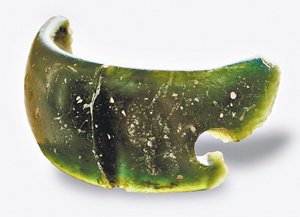 In recent years, many people have heard
of Denisova Cave - underground pearl of the Altai Territory. Discovered
in her antiquity, since 1982, one after another raised considerable buzz
in the scientific world. Yes there in teaching? News reaches and far
removed from the people of archaeology.
We will not go into detailed descriptions of the Denisova Cave. We will only say that it is an underground refuge for many centuries and even millennia have been a comfortable home for our ancestors of. Located in the beautiful valley of the cave (for the fans to look through Google Map or Google Earth - 51 ° 23'51.29 "p. M. 84 ° 40'34.34" in. E), surrounded by mountains, very close to the river Anouilh. The perfect place for a long holiday and permanent housing for all times. Local talk says: Used to say, there once lived a powerful shaman who could turn into a bear. Because the cave Au-Tash is called in the local, in the Altai, which means "Bear stone." Angry uncle was a cave dweller. I collect tribute from all the local residents by threatening force. And if someone does not pay, then the shaman called upon the mountain clouds, lightning struck them, raised a storm, and large boulders cast down. All those who did not listen to the sorcerer, or died at or deprived harvest - mow boulder. Win sorcerer could only god Ulgen, which the shaman bent, stone storm away from him and put it ... well was, but magic is gone for good. Even archaeologists - Won - say that if the stones cave otkolupnut, the rain starts. 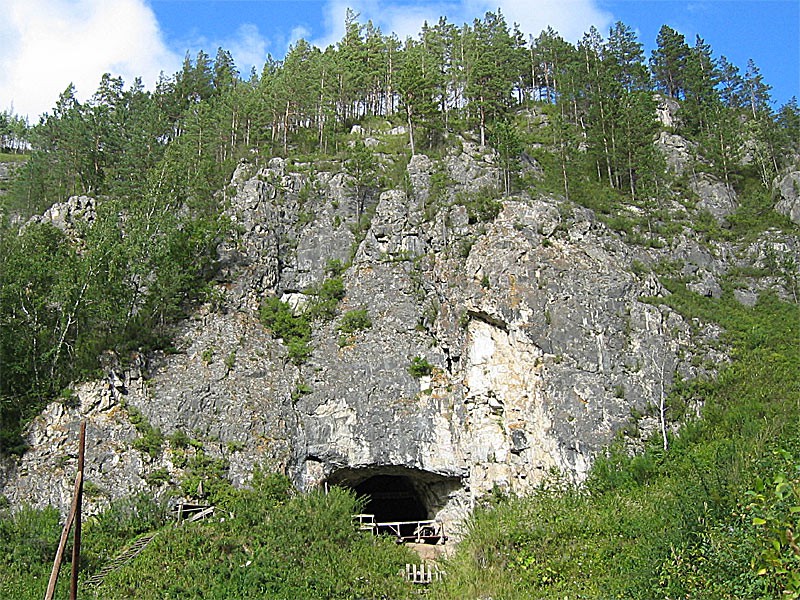 It was so in fact or not, but from the
beginning Denisova cave was a refuge for many generations. And not only
the mythical shamans bears, but also ordinary people, and even the
oldest of our ancestors. Through research and excavations in the stone
arches of the Ayu-Tash we learn more about the past of our planet and
our civilization.
For example, previously found in the cave of the things confirmed in the scientific world view that Neanderthals were settled in the Altai is not 30-50 thousand. Years ago, and at least 300 thousand.! You feel the difference? Many of the scientists' ideas about the past swayed after the opening of the cave. After all, it showed almost all the cultural layers of the main technological eras in the history of mankind. Therefore Denisova cave called "an encyclopedia of ancient and ancient history of Asia." A recent finding has surprised many researchers. They found the stone of the bracelet, which - attention! - According to the Institute of Archeology and Ethnography of the Academy of Sciences, doctor of historical sciences Pavel Volkov, decorated its existence ancient women 40-50 thousand. Years ago! Dr. Volkov said that "this thing can be called the most ancient human adornment, ancient jewelry." (And in fact a few years ago it was believed that the manufacture of jewelry trinkets ancestors began to engage in only 10 thousand. Years ago!) 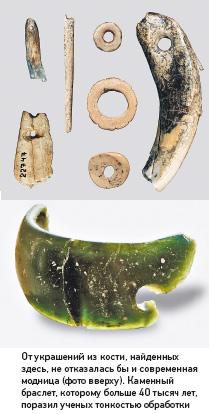 However, the surprising findings except age process-ability, with which it was made. The stone favors done smooth hole, through which passes a string with beads. The work done so precisely that there is no doubt: the bracelet produced a very skilled worker, and he used technology similar to modern drilling machine. Deputy Director of the Institute of Archaeology and Ethnography Michael Shunkov said scientists was a big surprise that "the most archaic kind of been the owner of a progressive culture." Recall that we are talking about Neanderthals. Previously it was thought that they and the knife is not always able to keep ... Scientists gave the find to the museum of the Institute of Archaeology and Ethnography in Novosibirsk and do new excavations. That's all the news. But the best is yet to come! If someone does not remember, earlier in Denisova Cave were found the remains of an unknown species of an ancient man. The photo of this mysterious tooth kind of person. Should be noted that the size of a tooth that is many times greater than an analog of a modern man SOURCE: Rodobozhie.ru |
|
Denisova Cave (Денисова пещера, also
Ayu-Tash) is a cave in the Bashelaksky Range of the Altai mountains,
Siberia, Russia. The cave is of great paleoarchaeological and
paleontological interest. Bone fragments of the Denisova hominin,
sometimes called the "X woman" (referring to the maternal descent of
mitochondrial DNA) originate from the cave, including artifacts dated to
~40,000 BP. The cave is located in a region thought to have been
inhabited concurrently in the past by Neanderthals and modern humans.
Description Coordinates: 51°23′51.29″N 84°40′34.34″E Located in Altai Krai, at the border of the Altai Republic, the cave is near the village of Chorny Anui (Чёрный Ануй), and some 150 km south of Barnaul, the nearest major city. The cave, which is approximately 28 m above the right bank of the Anuy River (a left tributary of the Ob), has formed in upper Silurian limestone and contains a floor area of about 270 metres2. It contains a central chamber with a floor of 9 x 11 metres with side galleries. It has been described as both as a karst cave and as a sandstone cave. Cave sediments are rich with remnants of animals, including extinct ones. Remains of 27 species of large and medium-sized mammals have been found, (such as cave hyena, cave lion, etc.) and 39 species of small mammals, as well as remnants of reptiles, 50 bird species and other vertebrates. Pollen in the sediments of cave is used for palaeoclimatological research. History In the 18th century, the cave was inhabited by a hermit, Dionisij (Denis), and was named after him, while the indigenous Altay people call it Ayu-Tash (Bear Rock). In the 1970s, Soviet scientists discovered paleoarcheological remains in the cave that led to further explorations. So far, 22 strata have been identified, with archeological artifacts that cover the time from Dionisij back to about 125,000-180,000 years ago. The dating of the strata was accomplished by the use of thermoluminescence dating of sediments, or, in some cases, radiocarbon dating on charcoal. Among the archeological artifacts are Mousterian- and Levallois-style tools attributed to Neanderthals. Beside tools, researchers found decorative objects of bone, mammoth tusk, animal teeth, ostrich egg shell, fragments of a stone bracelet made of drilled, worked and polished dark green chloritolite, and pendants. The average annual temperature of the cave remains at 0 °C (32 °F), which has contributed to the preservation of archaic DNA among the remains discovered.  Replica of the molar of Denisova. Part of the roots was detroyed to study the mtDNA. Their size and shape indicate it is neither neanderthal nor sapiens. By Thilo Parg Denisova hominin Scientists from the Institute of Archaeology and Ethnology of Novosibirsk have investigated the cave. Among the artifacts which had been left about 30,000 to 48,000 years ago (strata 9-11), bones were identified. One of these bones was a piece of phalanx of a child that was analyzed by Svante Pääbo and coworkers from the Max Planck Institute for Evolutionary Anthropology in Leipzig; its mitochondrial DNA revealed a structure that differs from known human patterns and has been ascribed to "Denisova hominin", apparently an extinct hominin species or subspecies. Further analysis revealed the Denisovans were related to the Neanderthals and interbred with the ancestors of modern Melanesians. In 2011, a toe bone was discovered in the cave, in layer 11, and therefore contemporary with the finger bone. Preliminary characterization of the bone's mitochondrial DNA suggests it belonged to a Neanderthal, not a Denisovan.[8] Later analysis confirmed the toe bone as coming from a Neanderthal.[9] The cave also contains stone tools and bone artifacts made by modern humans, and Pääbo commented: "The one place where we are sure all three human forms have lived at one time or another is here in Denisova Cave." Fossils So far, the fossils of four distinct individuals from Denisova Cave have been identified through their DNA. Three of the individuals, Denisova 3, Denisova 4 and Denisova 8 are classified as Denisovans. Denisova 3 is a young girl, while Denisova 4 and Denisova 8 are adult males. One of the individuals, the Altai Neanderthal, is a Neanderthal woman. Before its DNA was sequenced, the Altai Neanderthal had been given the provisional name of Denisova 5. During DNA sequencing, Denisova 4 and Denisova 8 yielded low-coverage genomes, while Denisova 3 and the Altai Neanderthal yielded high-coverage genomes |
Genome of Denisovan Man Deciphered For the first time scientists have sequenced the genome of Denisovan man. The main difficulty in this process was the fact that his DNA was too fragmented due to the impressive age. In addition, when you remove the double chain sought to break up into two single. Therefore, in the study, researchers have proposed a method for decoding that needed only one half of the spiral. As a result, the accuracy of decoding has grown to several orders of magnitude. Scientists were able to pass the 99.9 percent of the DNA at least once and 92 percent at least twenty times. In science this is considered to be a threshold at which DNA fragment is considered to be decrypted. Scientists had to work with a material that has been extracted from several teeth and a fragment of the little finger of a little girl. Despite the scarcity of the material, the researchers now know more about Denisovan man than the Neanderthals. Paleobiology of the analysis identified particular Denisovan man. for example, they found that these people branched off from the modern Homo Sapiens in the period from seven hundred to one hundred and seventy thousand years ago. The girl, whose remains were studied by scientists, and that was dark brown-eyed brunette, died about eighty thousand years ago. In addition, it confirmed a hunch that Denisovan man left genetic traces in Melanesians. SOURCE: Catherine Pastukhov 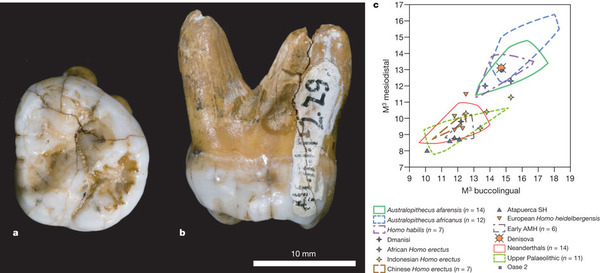 Morphology of the Denisova molar. - Nature 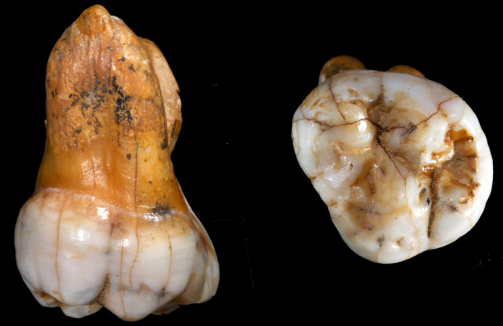 Tooth from Denisova cave. Image from Reichs et al. |
Related Links:
Papers:
|
| FAIR USE NOTICE: This page contains copyrighted material the use of which has not been specifically authorized by the copyright owner. Pegasus Research Consortium distributes this material without profit to those who have expressed a prior interest in receiving the included information for research and educational purposes. We believe this constitutes a fair use of any such copyrighted material as provided for in 17 U.S.C § 107. If you wish to use copyrighted material from this site for purposes of your own that go beyond fair use, you must obtain permission from the copyright owner. |
|
|
